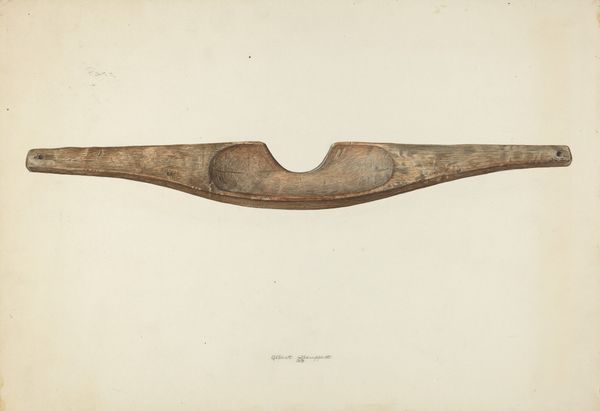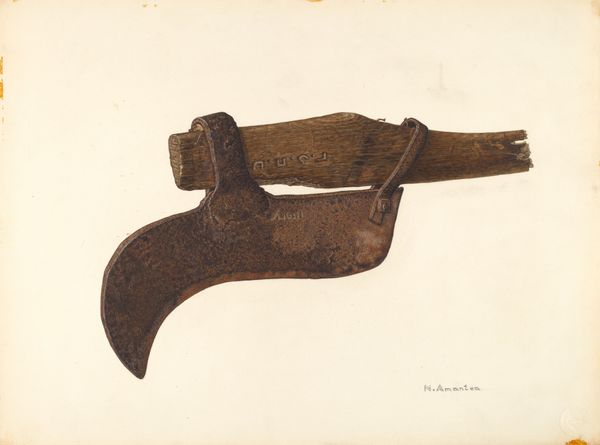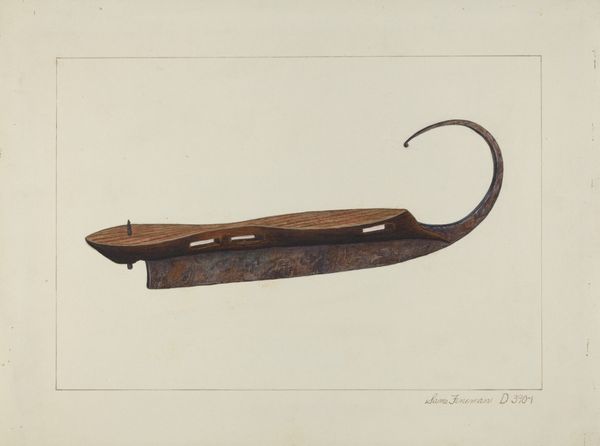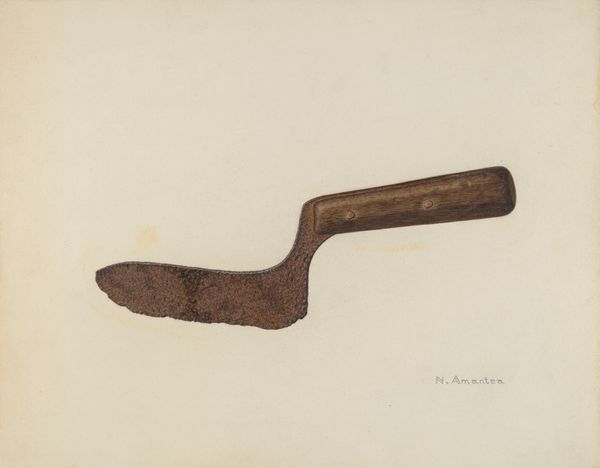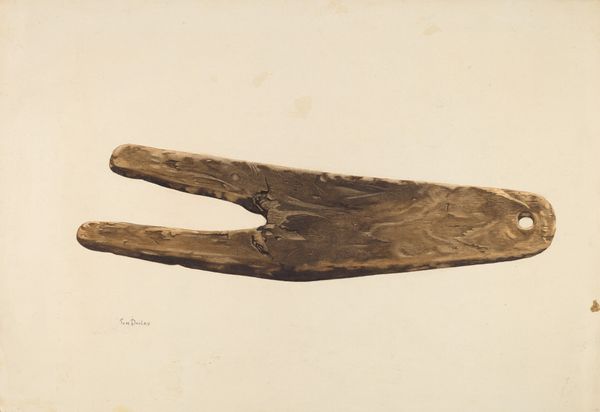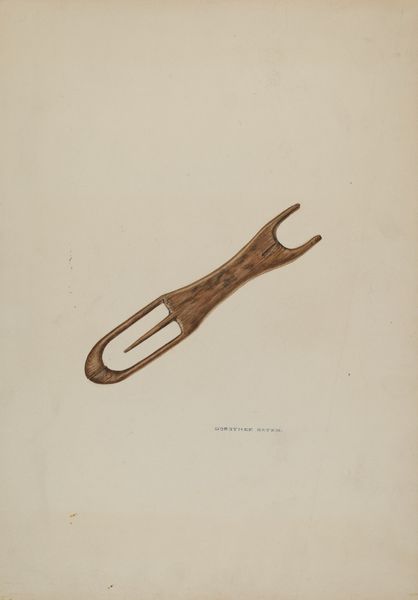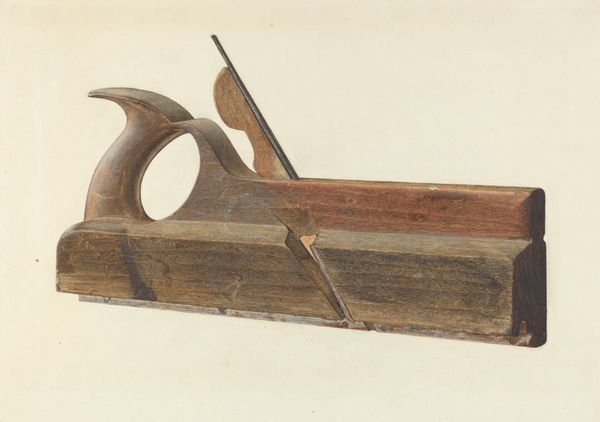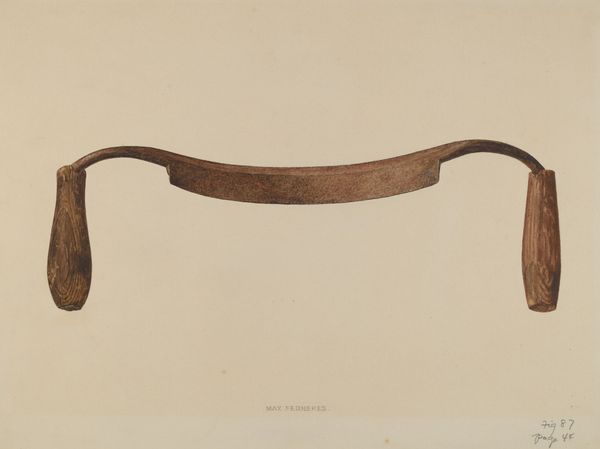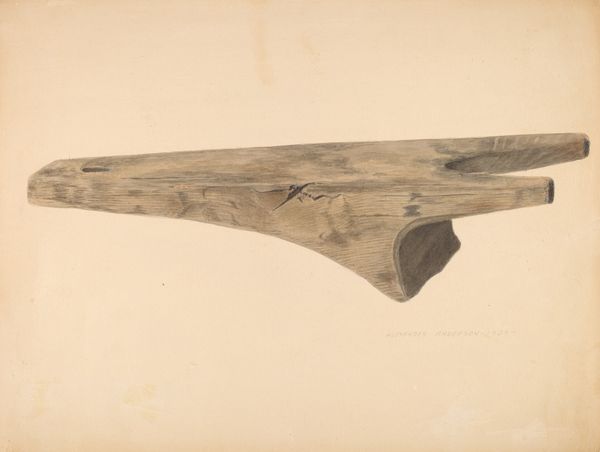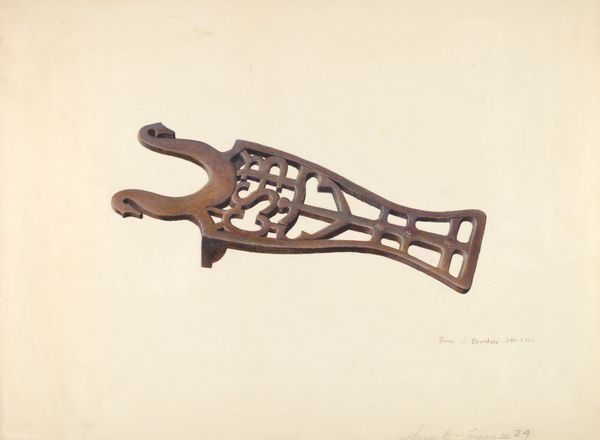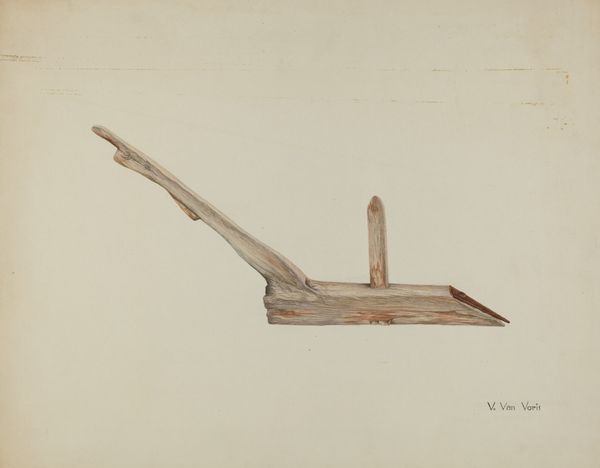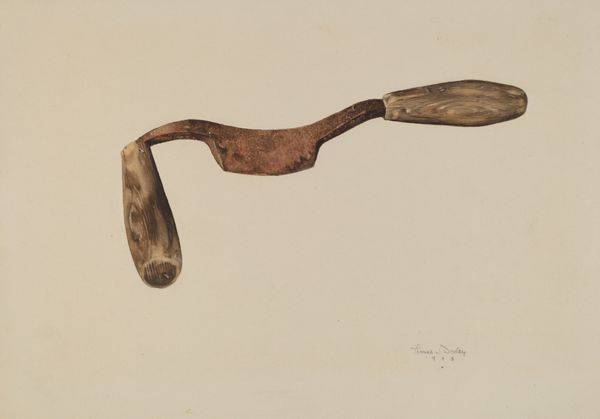
drawing, paper, pencil
#
drawing
#
charcoal drawing
#
paper
#
pencil
Dimensions: overall: 28 x 35.3 cm (11 x 13 7/8 in.)
Copyright: National Gallery of Art: CC0 1.0
Curator: Michael Fallon’s 1938 work, “Shoe Last,” presents us with a meticulously rendered object, a humble tool transformed into a subject worthy of close artistic attention, created with pencil and charcoal on paper. Editor: It's strangely… serene, isn't it? The stark simplicity of the object combined with the softness of the medium makes it appear almost monumental despite being just a simple drawing of a shoe last. Curator: Absolutely. I think part of that feeling stems from the social context. Consider the era: 1938. The world was on the brink of immense change, grappling with economic hardship and impending war. This rendering of a utilitarian object might be read as a focus on craft, on labor, and a longing for simpler times. Editor: You bring up a powerful point regarding labor and its value in a changing world. This piece could also be understood through the lens of gender and class. Shoemaking was historically a skilled trade, passed down through generations, often with a division of labor by gender. Did the artist have some interest in that area? I find it an intriguing proposition for intersectional study of class dynamics too. Curator: That is interesting. The drawing allows the viewer to focus on the tactile nature of the wood, the marks of wear and use, emphasizing the link between human labor and the object itself. What statements does the artist suggest by isolating the object from any human user? Editor: I think that the isolation actually magnifies the human element. The tool implies a maker, a wearer, a whole network of social relations surrounding its creation and use. In the absence of people, the object becomes a silent witness, embodying the history and experiences it has been a part of. Curator: Ultimately, “Shoe Last” acts as a bridge. A bridge to consider not just the past and the role of craftsmanship, but how objects mediate our relationship with labor, gender, and the very fabric of daily life in the present moment. Editor: Exactly. It’s a reminder that even the most ordinary objects are charged with meaning and can offer powerful insights into the world around us.
Comments
No comments
Be the first to comment and join the conversation on the ultimate creative platform.
